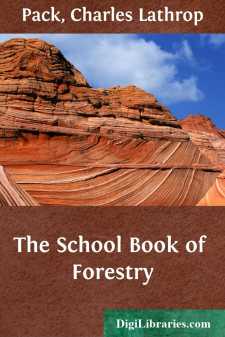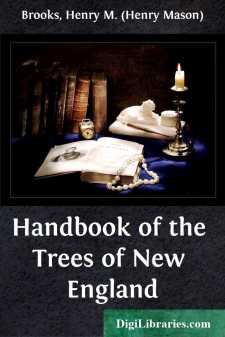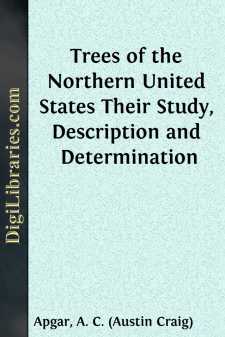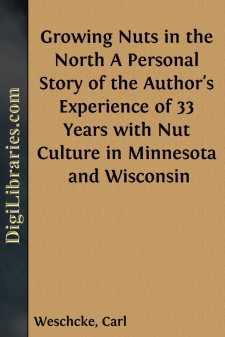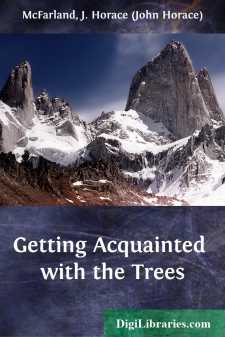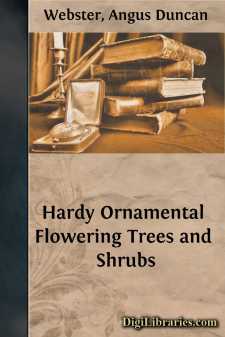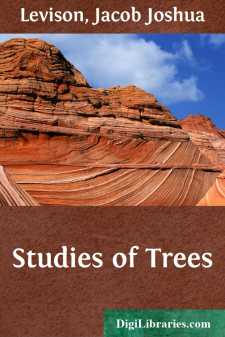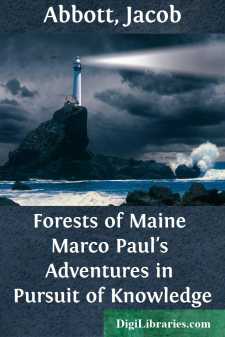Nature
- Animals 47
- Birds & Birdwatching 41
- Dinosaurs & Prehistoric Creatures 1
- Flowers 5
- General 32
- Horses 6
- Insects & Spiders 19
- Mammals 7
- Mushrooms 2
- Natural Disasters 6
- Natural Resources 3
- Reptiles & Amphibians 2
- Trees & Forests
Trees & Forests Books
Sort by:
CHAPTER I HOW TREES GROW AND MULTIPLY The trees of the forest grow by forming new layers of wood directly under the bark. Trees are held upright in the soil by means of roots which reach to a depth of many feet where the soil is loose and porous. These roots are the supports of the tree. They hold it rigidly in position. They also supply the tree with food. Through delicate hairs on the roots, they...
more...
PREFACE. There is no lack of good manuals of botany in this country. There still seems place for an adequately illustrated book of convenient size for field use. The larger manuals, moreover, cover extensive regions and sometimes fail by reason of their universality to give a definite idea of plants as they grow within more limited areas. New England marks a meeting place of the Canadian and...
more...
CHAPTER XII. THE MULBERRY FAMILY. "There is a fruit tree," said Miss Harson, "belonging to an entirely different family, which we have not considered yet; and, although it is not a common tree with us, one specimen of it is to be found in Mrs. Bush's garden, where you have all enjoyed the fruit very much. What is it?" "Mulberry," said Clara, promptly, while Malcolm was...
more...
PREFACE. This book has been prepared with the idea that teachers generally would be glad to introduce into their classes work dealing with the real objects of nature, provided the work chosen were of a character that would admit of its being studied at all seasons and in all localities, and that the subject were one of general interest, and one that could be taught successfully by those who have had no...
more...
by:
Carl Weschcke
Introduction GROWING NUTS IN THE NORTH Only a few books have been written on the subject of nut trees and their bearing habits, and very little of that material applies to their propagation in cold climates. For these reasons I am relating some of the experiences I have had in the last thirty-two years in raising nut trees in Wisconsin. To me, this has been a hobby with results both practical and...
more...
A Story of Some Maples This is not a botanical disquisition; it is not a complete account of all the members of the important tree family of maples. I am not a botanist, nor a true scientific observer, but only a plain tree-lover, and I have been watching some trees bloom and bud and grow and fruit for a few years, using a camera now and then to record what I see—and much more than I see, usually! In...
more...
by:
John Evelyn
INTRODUCTION. I Evelyn & his literary contemporaries Isaac Walton & Samuel Pepys. Among the prose writers of the second half of the seventeenth century John Evelyn holds a very distinguished position. The age of the Restoration and the Revolution is indeed rich in many names that have won for themselves an enduring place in the history of English literature. South, Tillotson, and Barrow among...
more...
HARDY ORNAMENTALFLOWERING TREES & SHRUBS. ABELIA. ABELIA CHINENSIS (syn A. rupestris).—The Rock Abelia China, 1844. This is a neat, twiggy shrub, growing from 2 ft. to 3 ft. high, with slender shoots, and very pleasing, shining green serrated leaves. The tubular, sweet-scented flowers are produced in clusters at the ends of the shoots, even the smallest, and are of a very delicate shade of...
more...
Chapter I How To Identify Trees There are many ways in which the problem of identifying trees may be approached. The majority attempt to recognize trees by their leaf characters. Leaf characters, however, do not differentiate the trees during the other half of the year when they are bare. In this chapter the characterizations are based, as far as possible, on peculiarities that are evident all year...
more...
by:
Jacob Abbott
CHAPTER I. THE MOUTH OF THE KENNEBEC. One summer, Forester and Marco Paul formed a plan for going to Quebec. Marco was very much interested in going to Quebec, as he wanted to see the fortifications. Forester had told him that Quebec was a strongly-fortified city, being a military post of great importance, belonging to the British government. Marco was very much pleased at the idea of seeing the...
more...


